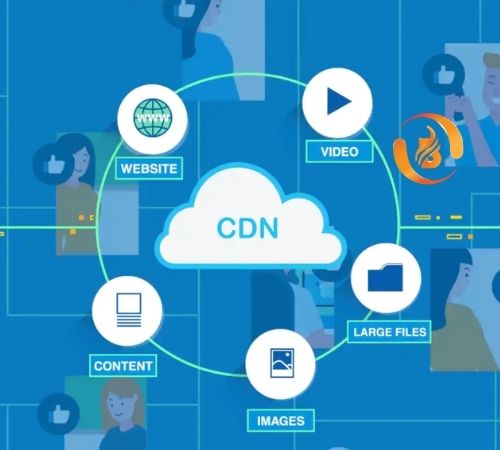Content delivery network interpretation:
The best Web Development Company In India implements a content delivery network (CDN), a collection of geographically spread computers that speeds up online content delivery by bringing it closer to consumers. Caching, a method that keeps copies of files temporarily, is utilized by data centers all over the world so that you may access online content more quickly through a server near you using a web-enabled device or browser. CDNs cache web pages, images, and videos on proxy servers near your physical location. It’s no longer necessary to wait for the material to load before viewing a movie, installing software, checking your bank balance, commenting on social media, or making transactions. CDN services were established to alleviate network congestion caused by sending rich online content such as graphics and video across the internet, similar to a traffic jam. For the best Web Development Company In India, it took much too long to get material from centrally situated servers to individual users. Text, images, scripts, and media files are now all part of CDNs, as are software downloads, documents, portals, e-commerce, live streaming media, on-demand video streaming media, and social networking sites. CDNs may also help defend websites from malicious actors and security threats such as distributed denial-of-service (DDoS) assaults.
What more services does a CDN provide?
In the best Web Development Company In India, the most typical use case for any CDN is to improve load speed by distributing your content over a content delivery network. However, there are other use cases, some of which are implicit in the usage of a CDN and others which are employed by significantly bigger and more technologically adept enterprises.

Expansion of Availability
This is an unavoidable consequence of utilizing any CDN.
For the sake of simplicity, availability may be thought of as a basic measurement of how long your website and its functionalities are accessible throughout a certain time period.
The best Web Development Company In India provides content from your servers, you will often need to add more servers as your traffic grows. It’s possible that an unanticipated problem with your server or database will cause the application to go down.
When a CDN enters the scene, it does two things. For starters, a significant portion of traffic never reaches your servers. The CDN’s edge server serves a large amount of stuff from its cache. As a result, you’ll require a few less servers. Second, even if your physical servers are down, the CDN will continue to provide the content as long as the material is accessible in the CDN’s cache. This allows you some breathing room to address server issues while the CDN serves any material it can from its cache.
Safety of the website
This is a more complex CDN application that is often utilized by larger businesses.
Because the CDN PoP or edge server is now the first tier of the system to receive incoming traffic, it also serves as the initial line of defense against website assaults.
Now, if a CDN can distinguish between good and bad traffic, it can prevent all bad traffic from reaching your servers. Your servers will only react to “good” queries from real people.
The issue of website security is wide and beyond the scope of this blog. However, some features, such as restricting access to non-HTTP ports, are typical in all CDNs and serve to ensure basic security. Everyone has access to such features. More complex services, such as Bot Prevention, Web Application Firewall (WAF), DDoS protection, and so on, are offered as add-ons in some CDNs. The cost of such add-ons is generally high, and configuring them requires time and effort. As a result, only a few organizations that have similar difficulties and can afford to adopt more expensive bespoke solutions employ them.
Visit us at: www.biovustechnologies.com







